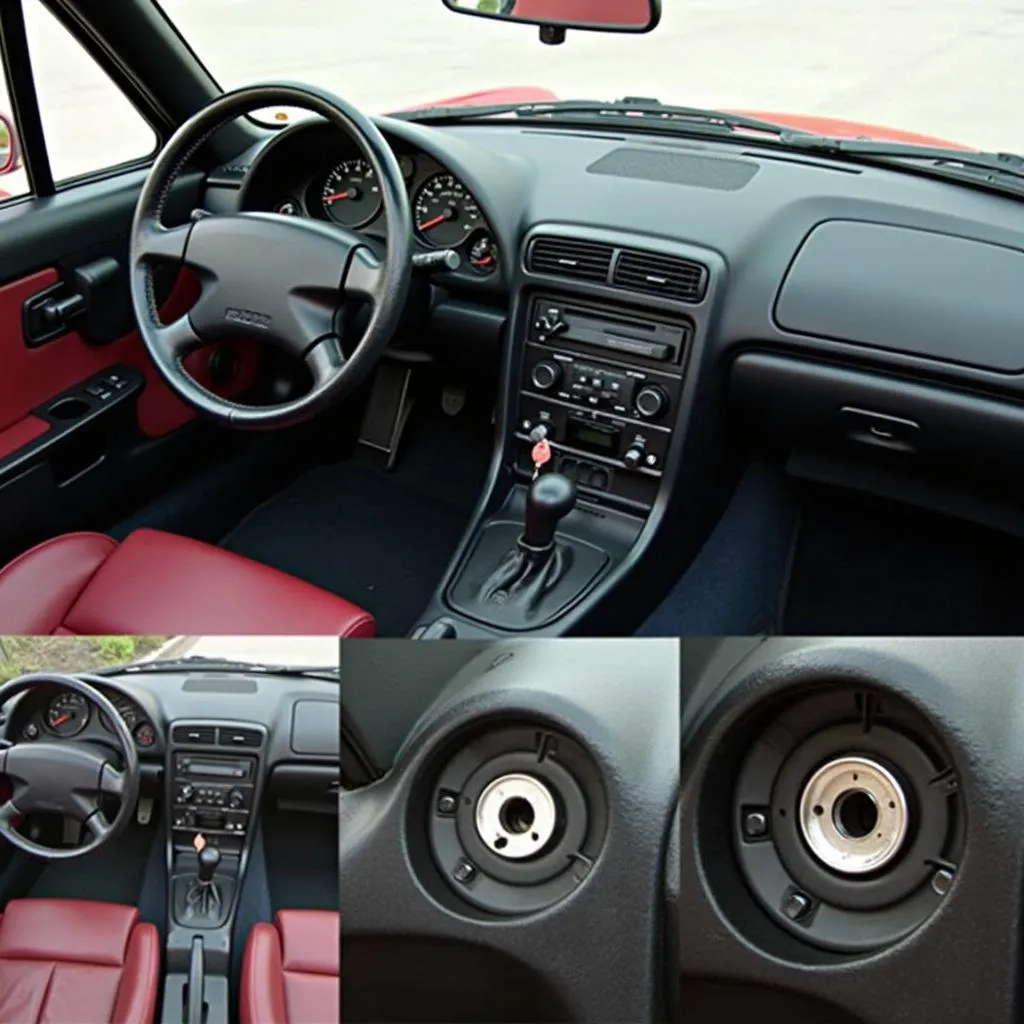If you own a Hyundai, you’re likely familiar with the reassuring blink of the anti-theft system light on your dashboard. This small signal represents a sophisticated security system designed to keep your car safe from theft. But how does this system actually work, and what are the key components that make it effective?
Understanding the Basics of Your Hyundai Anti Theft System
Hyundai’s anti-theft system, often called an immobilizer system, is designed to prevent unauthorized engine starting. It consists of a few key parts working together seamlessly:
- Immobilizer Control Unit (ICU): The brain of the operation. It’s responsible for communicating with the key, recognizing its authorization, and enabling or disabling the fuel and ignition systems accordingly.
- Transponder Key: Your Hyundai key isn’t just a key; it’s a mini computer. Embedded within is a transponder chip that emits a unique code.
- Antenna Ring: Located around the ignition cylinder, it reads the signal from your transponder key when inserted.
How It All Comes Together
- Key Insertion: When you insert your key into the ignition, the antenna ring around the ignition cylinder attempts to detect the unique code from the transponder chip in your key.
- Code Verification: The antenna ring transmits this code to the immobilizer control unit. The ICU checks if the received code matches the one stored in its memory.
- Authorization: If the codes match, the ICU sends a signal to the engine control unit (ECU), authorizing it to start the engine.
- Immobilization: If the codes don’t match, or if a non-transponder key is used, the ICU won’t authorize the engine start. This effectively disables the vehicle, preventing it from being hot-wired.
Common Issues and Troubleshooting Tips
Like any complex system, your Hyundai’s anti-theft system can experience occasional issues. Here are some common problems and how you can address them:
- Key Not Recognized: If your key isn’t recognized, try using your spare key. If that works, the battery in your original key might need replacing.
- Immobilizer Warning Light Blinking: A blinking immobilizer light usually indicates an attempted breach. It’s best to have your car checked by a qualified mechanic or dealership.
- System Malfunction: In rare cases, a malfunction within the system itself can occur. A professional diagnostic scan can pinpoint the problem.
Finding Expert Help
While some anti-theft system issues might have straightforward solutions, others require specialized knowledge and tools. If you’re facing persistent problems, it’s wise to seek help from experienced professionals. Companies like CARDIAGTECH, which specializes in remote diagnostics, programming, and software installation for automotive repairs, can provide expert assistance for a wide range of car issues, including those related to your anti-theft system.
FAQs about Hyundai Anti-Theft Systems
Can I disable my Hyundai anti-theft system?
While it might seem tempting, especially if you’re experiencing issues, it’s generally not recommended to disable your anti-theft system. It’s there to protect your investment.
How long does a Hyundai anti-theft update take?
Updating your Hyundai’s anti-theft system usually doesn’t take long. However, the exact duration can depend on factors like the model year and the complexity of the update. To learn more about update times, you can refer to our guide: How Long Does a Hyundai Anti-theft Update Take?
Does the Hyundai Elantra have an anti-theft system?
Yes, the Hyundai Elantra, like most modern Hyundai vehicles, is equipped with an immobilizer system as a standard safety feature. You can find more information on specific Elantra models on our website: Does the Hyundai Elantra Have an Anti-theft System?
Understanding how your Hyundai’s anti-theft system works can provide peace of mind and help you address issues proactively.

